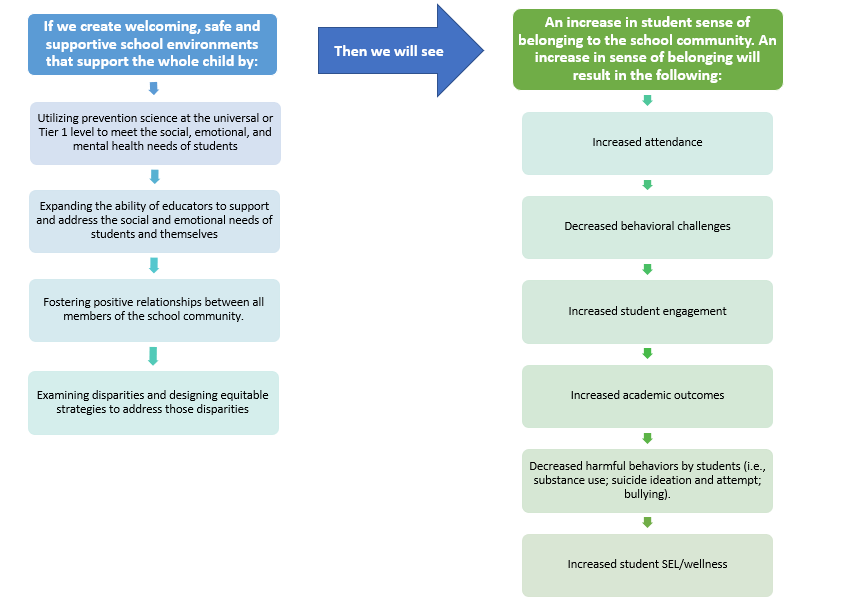You are here
Wellbeing and Connectedness
Overview
As districts continue working to respond to the impacts of the COVID-19 pandemic, the importance of wellbeing and connectedness for students and staff members is a primary consideration. Students and staff members are more successful in learning and teaching when they feel connected and experience a sense of belonging to a supportive community. Social connection is a driver of wellbeing and helps reduce anxiety, depression, and disciplinary issues, while increasing positive affect, self-esteem, and academic progress. The options throughout this section provide considerations for all learning environments to focus on human connections.
Foundations for Wellbeing and Connectedness
Wellbeing
While most dictionaries define wellbeing as the state of being happy, healthy, and comfortable, many organizations expand the definition to include a list of factors such as engagement, learning, making contributions, self-expression, physical wellness and activity, mindfulness, and resilience.
School Connectedness
The Centers for Disease Control and Protection (CDC) defines school connectedness as the belief by students that adults and peers in the school care about their learning as well as about them as individuals and cites that "students are more likely to engage in healthy behaviors and succeed academically when they feel connected to school." (School Connectedness) Evidence-based strategies for improving school connectedness are included throughout this section of the Toolkit.
Sense of Belonging
This is a sense that one has a rightful place in a given academic setting and can claim full membership in a school and classroom community. A sense of belonging strengthens resilience, increases connection, and promotes positive development.
Positive School Climate
A positive school climate is foundational to the academic promise of the school. It reflects a supportive and fulfilling environment, high expectations, and teaching and learning conditions that meet the needs of all students and their families. Positive school climate refers to the work of a school community to create a quality experience for all students, staff, and families.
Accessibility and Inclusion
The suggestions and resources in this toolkit are for all students, families, and school staff. All student populations have felt the impact of the COVID-19 pandemic. It is important to address the wellbeing of ALL students, to provide social connections for all students, and to address accessibility to learning by recognizing and responding to each and every student's needs.
While all students need universal support, some students may benefit from those specifically designed to meet their individual needs. Some students with disabilities may have characteristics that make connecting with peers and teachers more difficult. Students who are English Learners may experience a sense of cultural deprivation. Students who are economically disadvantaged may not have the technology experience or opportunities to connect with their school classmates. Gifted and talented students may be more prone to social and emotional concerns. Ensuring accessibility to instruction and socialization ensures participation for all.
Theory of Action about School Climate Work
The following chart is intended to help support a school-based process to support a positive school climate and culture:





Connect With Us




